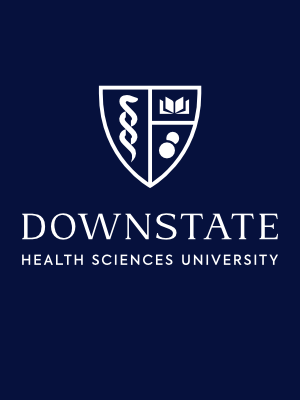
John Lewis, PhD
Professor
Department of Cell Biology
The principal interest of our laboratory is the mechanism of action of Interferons, naturally occurring antiviral agents. In addition to their potent anti-viral activities,interferons can inhibit cell growth, and for this reason are used in cancer chemotherapy, and also to regulate immune responses in multiple ways.
We are analyzing several aspects of interferon function using the techniques of molecular and cellular biology. A major focus of our present research is the ability of viruses to evade the anti-viral efects of interferons. We have shown that vaccinia virus, a distant relative of the smallpox virus, is able to block cellular responses to interferon-gamma thus evading its antiviral effects. Interferons, like other cytokines, are normally secreted in response to inducing agents such as viruses and then bind to the cell-surface of unaffected cells via specific cell-surface receptors.
The interaction with surface receptors triggers a signaling cascade involving tyrosine kinases which phosphorylate and activate constitutively expressed transcription factors located within the cytoplasm. The activated transcription factors migrate to the nucleus and bind to specific DNA sequences (interferon-stimulated response elements or ISREs) of associated genes causing transcription of these genes. Vaccinia virus is able to block this signal transduction pathway by preventing phosphorylation of Stat 1, the transcription factor activated by interferon-gamma. Our work has demonstrated that this effect is due to dephosphorylation of activated Stat1 by vaccinia virus. The virus particle contains a dual-specificity phosphatase, VH1, which we have strongly implicated in this effect. Once vaccinia attaches to the cell surface it is internalized and uncoated in a process that requires cellular protein synthesis. During this process VH1 is released to the cytoplasm and is able to de[hosphorylate Stat1 if the cell is exposed to interferon gamma thus protecting replication of the virus from host induced defense mechanisms. Recent experiments using reporter constructs have shown that expression of VH1 alone in cells is sufficient to block interferon-gamma mediated activation of gene expression. Currently we are investigating other effects of VH1 on pathways that might block viral replication. For more information see Najarro et al., 2001
Several years ago we discovered that interferon-beta inhibits the expression of genes encoded within mitochondria (Shan et al., 1990). We have since found that 12 of the 113 protein encoding genes expressed in mitochondria re-affected by interferon. Inhibition of mRNA synthesis causes a reduction in the level of specific mitochondrial proteins, such as cytochrome b. Analysis of several cell-lines has shown that treatment with interferon-beta leads to impaired electron-transport activity. A consequence is that the level of ATP in interferon-treated cells is significantly reduced (> 50%). This may be one of the causes for the inhibition of cell growth. We are currently investigating the mechanism by which interferon down-regulates the synthesis of mitochondrial mRNA species. For more information see Lewis et al. 1996 and Shan et al. 1990.
In another project we have found that interferon-gamma can regulate gene expression from within the cell. We have observed that experimental introduction of human interferon-gamma into the cytoplasm of murine cells (or vice-versa) leads to the induction of specific interferon responsive genes Lewis et al., 1995). Human interferons cannot bind to murine cell-surface receptors. These findings suggest that there is a second receptor for interferon-gamma located within the cytoplasm which can trigger at least some responses. Whether this internal receptor functions in normal responses to exogenous interferon is under study. We are studying the role of specific regions of the interferon-gamma molecule in its activity via the cell-surface receptor and the putative cytoplasmic receptor. Mutagenesis to remove the carboxy-terminal 7 amino acids, a highly basic and completely conserved domain, shows that this region is required for full activity via the cell-surface receptor. Removal of these amino acids greatly reduces binding of the molecule to its receptor. This region of the molecule resembles a nuclear targeting domain. Recent experiments using fusions with the Green Fluorescent Protein have demonstrated that the basic, C-terminal region of interferon-gamma can indeed function as a nuclear targeting signal. For more information see Lewis et al. 1995.
We have also cloned a cDNA for a previously unknown gene by differential screening of DNA Libraries. Expression of the corresponding gene, BS4, is up-regulated by both interferon-beta and interferon-gamma. We have now isolated and sequenced a full-length cDNA function. Interestingly, the gene is induced by interferon-gamma, but not by interferon-beta in a mutant cell-line which is defective in its responses to interferons (Lewis et al., 1989). This suggests that distinct pathways for induction may be involved in responses to beta and gamma interferons. To address this question we have isolated genomic clones for BS4 and identified the regulatory region of the gene (Parsa et al., in preparation). The DNA sequence of the regulatory region contains several novel elements which are capable of regulating the expression of reporter genes attached to them.
- Najarro, P., Traktman, P. and Lewis, J.A. Vaccinia Virus blocks gamma interferon signal transduction: viral VH1 phosphatase reverses Stat1 activation. J. Virol. 75 : 3185-3196 (2001)
- Lewis, J.A., Huq, A. and Najarro, P. Inhibition of mitochondrial function by Interferon. J. Biol. Chem. 271:13184-13190 (1996)
- Lewis, J.A., Huq, A., Liu W. and Jacob A. Induction of antiviral responses and gene activation by intracellular interferon g. Virology 212: 438-450 (1995)
- Shan, B., Vazquez, E. and Lewis, J. A. 1990. Interferon selectively inhibits the expression of mitochondrial genes: A novel pathway for interferon-mediated responses. EMBO J. 9:4307-43114.